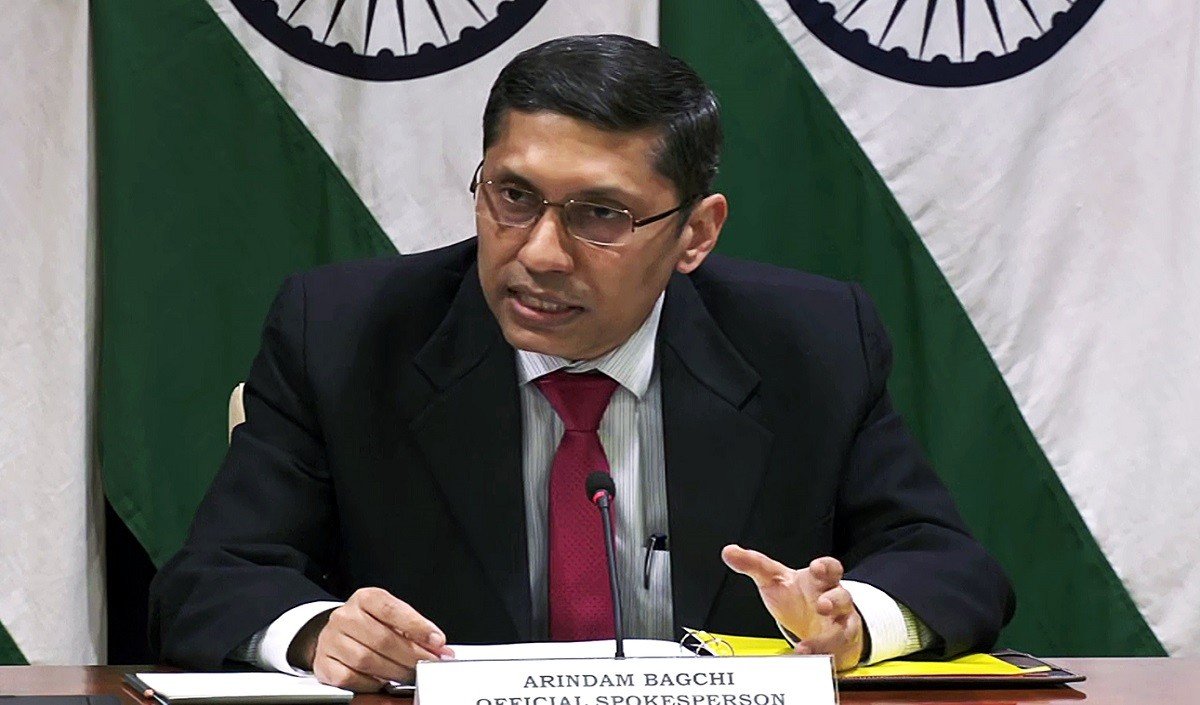
Organization of Islamic Cooperation (#OIC) Comments on Kashmir
>>India strongly condemned the Organisation of Islamic Cooperation chief’s visit to Line of Control (LoC) from the Pakistani side.

>>India strongly condemned the Organisation of Islamic Cooperation chief’s visit to Line of Control (LoC) from the Pakistani side.


What is OIC?
>>The OIC — formerly Organisation of the Islamic Conference — is the world’s second-largest inter-governmental organization after the UN, with a membership of 57 states.
>>The OIC — formerly Organisation of the Islamic Conference — is the world’s second-largest inter-governmental organization after the UN, with a membership of 57 states.
>>The OIC’s stated objective is “to safeguard and protect the interests of the Muslim world in the spirit of promoting international peace and harmony among various people of the world”.
>>OIC has reserved membership for Muslim-majority countries. Russia, Thailand,
>>OIC has reserved membership for Muslim-majority countries. Russia, Thailand,

and a couple of other small countries have Observer status.
India and OIC
>>At the 45th session of the Foreign Ministers’ Summit in 2018, Bangladesh suggested that India, where more than 10% of the world’s Muslims live, should be given Observer status.
India and OIC
>>At the 45th session of the Foreign Ministers’ Summit in 2018, Bangladesh suggested that India, where more than 10% of the world’s Muslims live, should be given Observer status.

>>In 1969, India was dis-invited from the Conference of Islamic Countries in Rabat, Morocco at Pakistan’s behest.
>>Then Agriculture Minister Fakhruddin Ali Ahmed was dis-invited upon arrival in Morocco after Pakistan President Yahya Khan lobbied against Indian participation.
>>Then Agriculture Minister Fakhruddin Ali Ahmed was dis-invited upon arrival in Morocco after Pakistan President Yahya Khan lobbied against Indian participation.

Recent developments
>>In 2019, India made its maiden appearance at the OIC Foreign Ministers’ meeting in Abu Dhabi, as a “guest of honor”.
>>This first-time invitation was seen as a diplomatic victory for India, especially at a time of heightened tensions with Pak following
>>In 2019, India made its maiden appearance at the OIC Foreign Ministers’ meeting in Abu Dhabi, as a “guest of honor”.
>>This first-time invitation was seen as a diplomatic victory for India, especially at a time of heightened tensions with Pak following
the Pulwama attack.
>>Pakistan had opposed the invitation to Sushma Swaraj, and it boycotted the plenary after the UAE turned down its demand to rescind the invitation.
>>Pakistan had opposed the invitation to Sushma Swaraj, and it boycotted the plenary after the UAE turned down its demand to rescind the invitation.

>>Earlier this year, the ousted Pakistani PM #ImranKhan called a OIC summit which ended up without any remarks 

What is the OIC’s stand on #Kashmir?
>>It has been generally supportive of Pakistan’s stand on Kashmir and has issued statements criticizing India.
>>Last year, after India revoked Article 370 in Kashmir, Pakistan lobbied with the OIC for their condemnation of the move.
>>It has been generally supportive of Pakistan’s stand on Kashmir and has issued statements criticizing India.
>>Last year, after India revoked Article 370 in Kashmir, Pakistan lobbied with the OIC for their condemnation of the move.

>>To Pakistan’s surprise, #SaudiArabia and the #UAE — both top leaders among the Muslim countries — issued nuanced statements, and were not as harshly critical of New Delhi as Islamabad had hoped. 

>>Since then, Pakistan has tried to rouse sentiments among the Islamic countries, but only a handful of them — #Turkey and #Malaysia — publicly criticized India. 



How has India been responding?
>>India has consistently underlined that J&K is an integral part of India and is a matter strictly internal to India.
>>The strength with which India has made this assertion has varied slightly at times, but never the core message.
>>India has consistently underlined that J&K is an integral part of India and is a matter strictly internal to India.
>>The strength with which India has made this assertion has varied slightly at times, but never the core message.

>>It has maintained its “consistent and well known” stand that the OIC had no locus standi.
>>India asserts that- OIC has become a “mouthpiece” of Pakistan and that the organisation has been taking “blatantly communal, partisan and factually incorrect approach to issues”.
>>India asserts that- OIC has become a “mouthpiece” of Pakistan and that the organisation has been taking “blatantly communal, partisan and factually incorrect approach to issues”.

OIC members and India
>>Individually, India has good relations with almost all member nations. Ties with the UAE and Saudi Arabia, especially, have looked up significantly in recent years.
>>The OIC includes two of India’s close neighbors, #Bangladesh and #Maldives.

>>Individually, India has good relations with almost all member nations. Ties with the UAE and Saudi Arabia, especially, have looked up significantly in recent years.
>>The OIC includes two of India’s close neighbors, #Bangladesh and #Maldives.


>>Indian diplomats say both countries privately admit they do not want to complicate their bilateral ties with India on Kashmir but play along with OIC. 

Way ahead
>>India now sees the duality of the OIC as untenable, since many of these countries have good bilateral ties and convey to India to ignore OIC statements.
>>But these countries sign off on the joint statements which are largely drafted by Pakistan.
>>India now sees the duality of the OIC as untenable, since many of these countries have good bilateral ties and convey to India to ignore OIC statements.
>>But these countries sign off on the joint statements which are largely drafted by Pakistan.

>>India feels it important to challenge the double-speak since Pakistan’s campaign and currency on the #Kashmir issue have hardly any takers in the international community.
END
END
• • •
Missing some Tweet in this thread? You can try to
force a refresh












